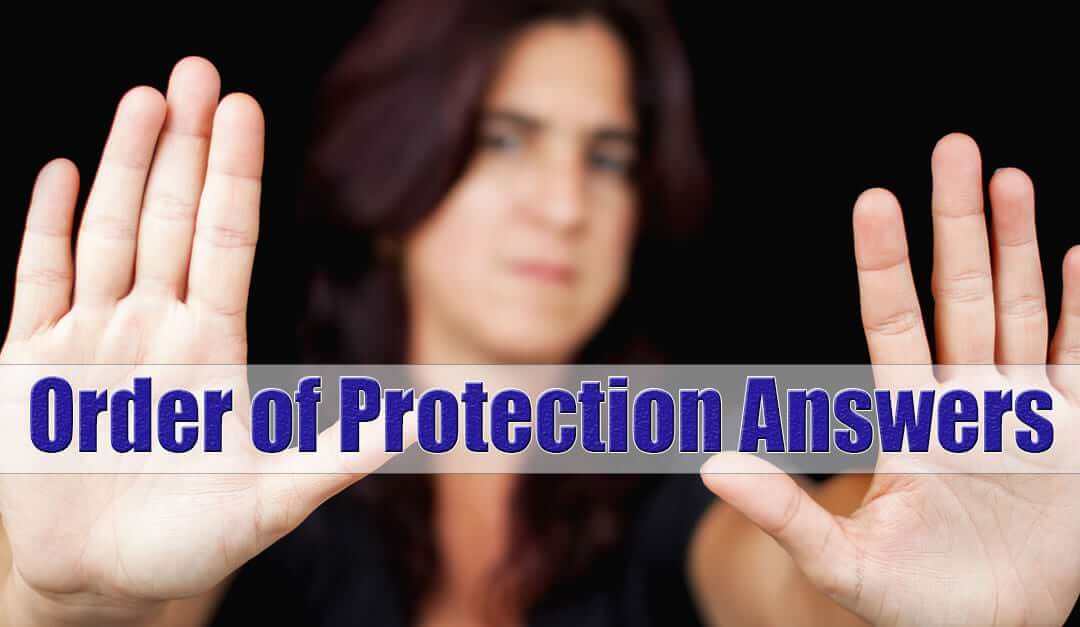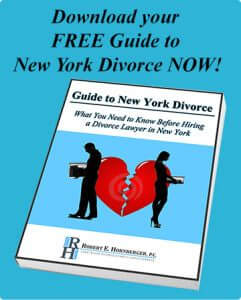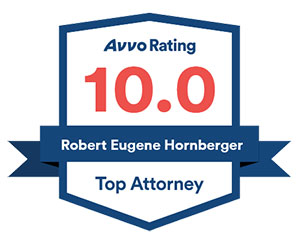
by Robert E. Hornberger, Esq | Jul 18, 2017
As an experienced family law attorney on Long Island I receive a lot of questions about Orders of Protection. Here are answers to some of the most frequently asked questions about orders of protection.
What is an Order of Protection?
If someone close to you, such as an intimate partner or a family member, is abusing you, you may be able to obtain an Order of Protection against them. An Order of Protection is a court order that will require the abuser (the “respondent”) to stop abusing the victim (the “petitioner”), and may also contain additional instructions that the respondent must follow.
(more…)

by Robert E. Hornberger, Esq | Dec 15, 2015
Domestic Violence and Orders of Protection on Long Island, New York
As a family law attorney serving Suffolk County and Nassau County residents of Long Island, I am saddened to see a number of domestic violence cases each year.
For a person experiencing family violence, including threats or other abusive behavior, an Order of Protection is a helpful tool that can help to limit the behavior of the offender.
In Suffolk County or Nassau County Family Court, these orders are often between a current and former spouse, a person with whom the victim has a child in common, another family member related by either blood or marriage, or a person with whom the victim has had an intimate relationship. Many Orders of Protection in New York are “limited” in that they allow contact between the offender (also known as the respondent) and victim (also known as the petitioner) so long as there is no harassment, physically abusive behavior, or other intimidating or threatening conduct.
Orders of Protection Vary in Nassau County and Suffolk County Family Courts
Orders of Protection can vary greatly depending on the circumstances of each case and the reason the order is needed. Orders of Protection can instruct an offender to “stay-away” from the victim and the victim’s children and/or to “refrain from” certain abusive behaviors or activities. In certain circumstances, an Order of Protection may direct the offender to move out of the home in order to protect the victim. An order will likely direct the offender to refrain from threats, intimidation, or physical abuse. The Order of Protection can also instruct the offender to follow custody orders, pay child support, to not have a gun, or to stop calling or texting the victim.
In Suffolk County & Nassau County, Orders of Protection Issued by Family Court, Criminal Court & Supreme Court
Orders of Protection may be issued by the Family Court, Criminal Court, or Supreme Court. The existence of any other legal proceeding involving the parties may determine which court issues the Order. For example, for couples involved in a divorce, an Order of Protection may be issued in Supreme Court where the matrimonial proceeding is pending. For parties involved in a domestic violence or other criminal charge in Criminal Court, the Criminal Court may issue the order. And, finally, a family member may petition the Family Court for an Order of Protection.
Family Offense Petition
In Family Court, the victim may wish to file what is called a “Family Offense Petition.” The petition should contain all of the relevant information, including the conduct and behavior that caused them to believe the protective order is necessary. Once the petition is filed, a temporary order of protection may be issued until the other party has a chance to appear in court. Once the court determines that, based on the petition, an Order of Protection may be necessary, both parties will be asked to appear in court. The judge will decide which terms and conditions are to be included in the order based upon the nature of the offense and conduct in the petition.
Orders of Protection Can Be Useful Deterrents for Abusive Behavior on Long Island
An Order of Protection is often a useful deterrent for abusive behavior. It is a crime to violate an Order of Protection. The Order acts as probable cause for an arrest if police are called to a scene of a domestic dispute. This means that the police will not have to use judgment in determining whether to arrest the offender at the scene; the order of protection will allow the police to arrest if it appears that the Order of Protection is being violated. Any violation of an Order of Protection can result in new criminal charges. It is important for offenders to know that even if the victim/petitioner initiates the contact, it does not excuse the violation of the Order of Protection.
If you believe that you may need an Order of Protection, or if an Order of Protection has been issued against you, it is important that you speak with an experienced attorney to know your rights and options. The Law Office of Hornberger Verbitsky, P.C. can assist you with your Family Law and Divorce Law matters in Nassau County and Suffolk County. Contact our office at 631-923-1910 or fill out the short form on this page to schedule your free consultation.

Download our Free New York Divorce Guide
Our 41-page “Guide to New York Divorce: What You Need to Know Before Hiring a Divorce Lawyer in New York” written by an experienced family law lawyer Long Island’s Robert E. Hornberger, Esq., provides you with real information on the divorce process and the laws it rests upon in the state of New York. This book will help give you a solid foundation upon which you can begin the process of making your family’s, life better. Download your Free Guide to New York Divorce here.

by Robert E. Hornberger, Esq | Aug 12, 2015
Divorce Lawyer on Long Island Asks If You Need an Order of Protection if You’re Afraid of Your Spouse
Do You Need an Order of Protection on Long Island?
As a Divorce Lawyer on Long Island, I’ve seen that some Nassau County and Suffolk County Divorces proceed quickly and smoothly; the parties agree on everything, their divorce attorney drafts the necessary paperwork, the parties execute all documents and the paperwork is submitted to the Court in Nassau County or Suffolk County. This is the desire of the majority of clients who walk into my office, and I am more than pleased when their matter proceeds as described.
However, a number of my Long Island divorce clients cases precede nothing like the above, and at times, spouses may be afraid of one another. If you find yourself in a situation where you are in fear for the safety of yourself or your children as a result of your spouse’s actions, the following are the most common routes to ensure you and your children are protected.
1. Call the local police department. If you find yourself in the midst of an argument with your spouse and you begin to fear for either your physical or mental well-being, dial 911 and call the police immediately. Upon the police’s arrival, they will take what is called a Domestic Incident Report. You will be the complainant, and the police will ask you for a description of the event, or events, that took place. While you may hope your spouse gets arrested on that spot, his or her arrest will depend upon the severity of the incident. But do not lie about what occurred in the hopes you will get your spouse thrown in jail. Be truthful and honest, as you may be required to annex a domestic incident report as an exhibit in a later court filing.
2. File for an Order of Protection in Nassau County or Suffolk County Family Court. If your spouse’s troublesome behavior is routine and consistent you may file for an Order of Protection in the Family Court of the county in which you reside. There are two types of orders of protection: a Stay Away and a Refrain From.
a. A Stay Away order of protection directs the subject of the order to “stay away from” the petitioner’s residence, place of employment and the petitioner themselves. If you are granted a “stay away” order of protection against your spouse, he or she will be required to vacate the marital residence.
b. A Refrain From order of protection directs the subject to “refrain from” engaging in the behaviors which brought the matter in front of the Family Court in the first place. If you are granted a “refrain from”, your spouse is not required to vacate the marital residence, however, if they violate the order, you can call the police who will likely arrest your spouse for said violation.
3. File in the Supreme Court for Exclusive Use and Occupancy of the Marital Residence. At times, I will direct clients to file for an order of protection in Nassau County or Suffolk County Family Court and they will either be denied said order or receive a refrain from. On occasion, clients are satisfied with the refrain from order, however, some are still in fear of their spouse’s behavior and want to know what other remedies are available to them.
My next step in these instances is to file an Order to Show Cause for Exclusive Use and Occupancy of the Marital Residence in the Supreme Court. This is a motion which, if granted by the judge, provides the relief requested immediately. This will also ensure that your spouse can no longer enter the marital residence. Generally, parties are not required to appear on the initial date of filing of an Order to Show Cause; however, the Judge may require a party’s appearance in extreme cases. If you previously filed domestic incident reports or orders of protection against your spouse, these will most likely be annexed to the motion as an exhibit.
If you are going through a Nassau County or Suffolk County Divorce and are afraid of your spouse make sure you speak to your Long Island Divorce Attorney about the remedies available to you. Divorce cases are not one size fits all, and therefore what was appropriate in your friend or family member’s matter may not be appropriate for your case.
Receive a Free Divorce Attorney Long Island Consultation
For more information about how to protect yourself and your children during your divorce in Nassau County of Suffolk County, contact an experienced Long Island divorce attorney. Long Island’s Robert E. Hornberger, Esq., PC and his compassionate and experienced divorce lawyers can help. Call us at 631-923-1910 for a complimentary, confidential consultation or fill out the short form on this page and we’ll get right back to you



Horberger Verbitsky, P.C. partners Robert E. Hornberger, Esq. and Christine M. Verbitsky, Esq.
Get your complimentary consultation and case evaluation with our experienced attorneys today. Your attorney will describe the many options available and determine together which is the right solution for you. By the end of this conversation, we’ll all understand how we can best help you to move forward.
No Cost or Obligation
There is no cost or obligation for this initial consultation. It is simply an opportunity for us to get to know each other, answer your questions and learn if Hornberger Verbitsky, P.C. is right the right law firm for you. Give us a call at 631-923-1910 or fill in the short form below for your free consultation and case evaluation. All Fields Are Required
Robert E. Hornberger, Esq., Founding Partner, Hornberger Verbitsky, P.C.
- Over 20 years practicing matrimonial law
- Over 1,000 cases successfully resolved
- Founder and Partner of Hornberger Verbitsky, P.C.
- Experienced and compassionate Long Island Divorce Attorney, Family Law Attorney, and Divorce Mediator
- Licensed to practice law in the State of New York
- New York State Bar Association member
- Nassau County Bar Association member
- Suffolk County Bar Association member
- “Super Lawyer” Metro Rising Star
- Nominated Best of Long Island Divorce Attorney four consecutive years
- Alternative Dispute Resolution Committee Contributor
- Collaborative Law Association of New York – Former Director
- Martindale Hubbell Distinguished Designation
- America’s Most Honored Professionals – Top 5%
- Lead Counsel Rated – Divorce Law
- American Institute of Family Law Attorneys 10 Best
- International Academy of Collaborative Professionals
- Graduate of Hofstra University School of Law
- Double Bachelor’s degrees in Philosophy, Politics & Law and History from SUNY Binghamton University
- Full Robert E. Hornberger, Esq. Bio
by Robert E. Hornberger, Esq | Jan 16, 2014
 As a Long Island Family Law Attorney, Divorce Lawyer and Divorce Mediator, I am regularly asked by prospective clients, “How do I go about obtaining an Order of Protection?”. Nassau and Suffolk County Family Law Courts have very specific, yet comprehensive requirements for obtaining an Order of Protection.
As a Long Island Family Law Attorney, Divorce Lawyer and Divorce Mediator, I am regularly asked by prospective clients, “How do I go about obtaining an Order of Protection?”. Nassau and Suffolk County Family Law Courts have very specific, yet comprehensive requirements for obtaining an Order of Protection.
To obtain an order of protection in a Long Island Family Court, a respondent must commit one of the following family offenses:
- Disorderly Conduct – Penal Law §240.20
- Harassment in the First Degree – Penal Law §240.25
- Harassment in the Second Degree – Penal Law §240.26
- Aggravated Harassment in the Second Degree – Penal Law § 240.30
- Sexual Misconduct – Penal Law § 130.20
- Forcible Touching – Penal Law § 130.52
- Sexual Abuse in the Third Degree – Penal Law § 130.55
- Sexual Abuse in the Second Degree – Penal Law § 130.60(1)
- Stalking in the First Degree – Penal Law § 120.60
- Stalking in the Second Degree – Penal Law § 120.55
- Stalking in the Third Degree – Penal Law § 120.50
- Stalking in the Fourth Degree – Penal Law § 120.45
- Criminal Mischief – Penal Law §145.00
- Menacing in the Second Degree – Penal Law § 120.14
- Menacing in the Third Degree – Penal Law §120.15
- Reckless Endangerment – Penal Law §120.20, §120.25
- Assault in the Second Degree – Penal Law §120.05
- Assault in the third Degree – Penal Law § 120.00 or an Attempted Assault
- Strangulation in the Second Degree – Penal Law § 121.12
- Strangulation in the First Degree – Penal Law § 121.13
- Criminal Obstruction of Breathing or Blood Circulation – Penal Law §121.11
- Criminal Obstruction of Breathing or Blood Circulation or Strangulation between:
- Spouses or
- Former Spouses or
- Between Parent and Child or
- between members of the Same Family or
- Household (except that if the respondent would not be criminally responsible by reason of age pursuant to § 30.00 of the Penal Law, then the family court shall have exclusive jurisdiction over such proceeding.
How to Originate the Order of Protection Proceeding
An Order of Protection proceeding is originated by the filing of a petition containing allegations that respondent committed one of the above family offenses and setting forth the relationship of the alleged offender to the petitioner and the name of each child in the family or household and the relationship of the child, if any, to the petitioner and to the respondent.
Who can Originate a Family Offense Proceeding in Family Court?
(A) Any person in the relation to the respondent of spouse, or former spouse, parent, child or member of the same family or household
(B) A duly authorized agency, association, society or institution
(C) A peace office, acting pursuant to his special duties or a police officer
(D) A person on the court’s own motion
For purposes of a Family Offense Proceeding, “members of the same family or household” shall mean the following:
(a) Persons related by consanguinity (blood relation) or affinity
(b) Persons legally married to one another
(c) Persons formerly married to one another regardless of whether they still reside in the same household
(d) Persons who have a child in common regardless of whether such persons have been married or have lived together at any time
(e) Persons who are not related by consanguinity or affinity and who are or have been in an intimate relationship regardless of whether such persons have lived together at any time
First, Obtain a Temporary Order of Protection
Upon the filing of a petition, a Long Island Family Court, for good cause shown, may issue a Temporary Order of Protection. The court may direct that the respondent refrain from certain actions, or stay away from the petitioner and/or the petitioner’s child(ren). The court may direct no communication between the parties. The court may also direct that the respondent turn over their firearms to the police until the proceeding is resolved. The court may also make other directions to the respondent, as it feels are necessary.
Fact-Finding Hearing Determines Validity of Petition
The petitioner must establish the allegations of the petition by a fair preponderance of the evidence. The potential outcomes of the hearing are:
1. Dismissing the petition.
2. Suspending judgment for not more than 10 months
3. Placing respondent on probation for not more than a year (FCA § 841 )
4. Making an Order of Protection
5. Direction restitution in an amount not to exceed $10,000.00
If Granted, an Order of Protection May Include:
A. Reasonable conditions of behavior for not more than two years
B. Stay away from individuals and places
C. Refrain from behaviors
D. Pay counsel fees and disbursements
E. Require counseling
F. Provide for medical expenses incurred as a result of the incidents established
G. Surrender of Firearms and Licenses.
Order of Protection Violations
If the court finds by competent proof that respondent willfully failed to obey an Order of Protection, the court may modify an existing order to add conditions, make a new Order of Protection, may order respondent to pay petitioner’s counsel fees and may commit respondent to jail for a term not to exceed six months.
More Questions About Orders of Protection on Long Island?
We’re Here to Help
The Law Offices of Robert E. Hornberger, Esq. regularly helps Long Islanders obtain Orders of Protection in Nassau County and Suffolk County Family Law Courts. For a free consultation, call us at 631-923-1910 or fill out the short form at the top of this page.





















